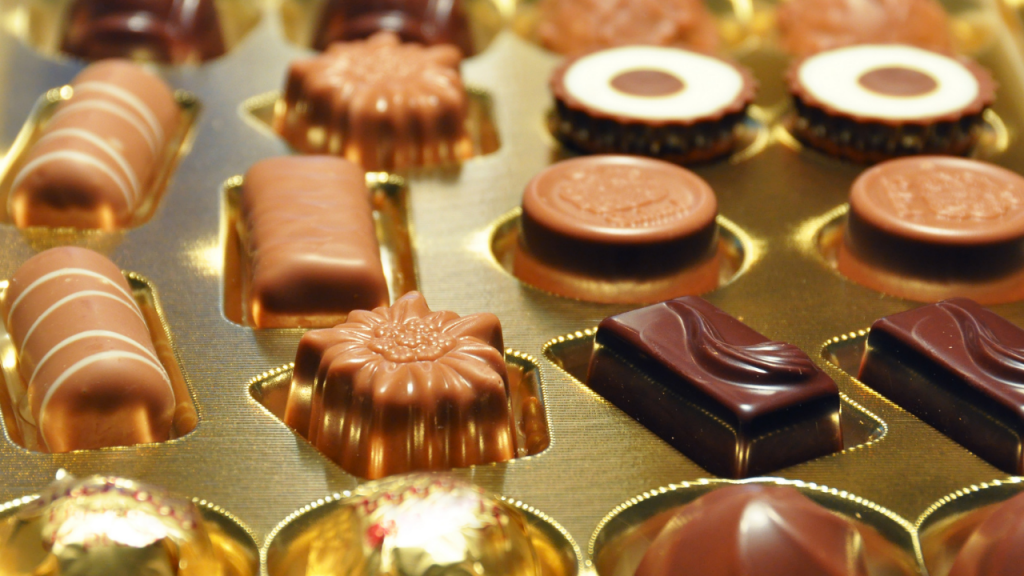Hello friends! Are you ready to know a little bit more about Swiss food? Because today we’ll take a look at Swiss chocolate, considered the best chocolate in the whole world!
If you want to learn more about Swiss chocolate don’t forget to download our activity package:
Click here to download the Swiss chocolate learning guide (English)
Click here to download the Swiss chocolate learning flashcards (English)
Click here to download the Swiss chocolate quiz (English)
–
Click here to download the Swiss chocolate learning guide (Spanish)
Click here to download the Swiss chocolate learning flashcards (Spanish)
Click here to download the Swiss chocolate quiz (Spanish)

For many people around the world, Switzerland is synonymous with chocolate. But not just any chocolate, rich, smooth chocolate that leaves you wanting more! The alpine regions of the country are home to creamy, rich milk, which is key to making chocolate with a silky consistency. But how did it all start?
History of Swiss Chocolate
Well, many years ago, in the 17th century, the Swiss made use of their strategic position as a transit point for goods in Europe. As you may know, Switzerland is located right in the middle of Europe, this gave Swiss people a great opportunity to share their products with other countries! Everything began in the canton of Ticino, which sits on Switzerland’s southern border with Italy. Back then, chocolate wasn’t the luxurious eating experience of today, chocolate was at once gritty and chewy.

It wasn’t until much much later that the chocolate we all know and love today came into existence. In 1819, the first mechanized chocolate factory opened in the town of Vevey. This factory was the Cailler chocolate factory, a very well-known brand in Switzerland. It even has a museum in Broc, The Maison Cailler, which offers tours starting from a comprehensive introduction to the history of chocolate from Aztec cocoa ceremonies up until modern innovations.
Many others soon followed Cailler’s lead and before long, chocolate factories had sprung up across Switzerland! In 1836, the Sprüngli family set up a shop in Zurich which would later merge with Lindt’s, a Bern-based factory in 1892. Now, the Lindt Home of Chocolate, a museum located in Kilchberg near the shores of Lake Zurich, has been designed specifically for visitors that share a love for chocolate. The Lindt museum offers unlimited tasting of chocolate from their Master Chocolatiers. It’s like a real-life Willy Wonka factory!
But Swiss people weren’t just making chocolate, they were innovating with it as well! In Vevey in 1867, Daniel Peter opened up his own chocolate factory and, with the intention of selling more chocolate, he decided to experiment a little by adding milk powder, made by a friend to his product. By doing this, he created the world’s first milk chocolate. By the way, did know what was the name of Daniel Peter’s friend? If may sound familiar, his name was Henri Nestlé. Yes, that Nestlé!

But the inventions didn’t stop there! In 1908, Theodor Tobler, working in his factory in Bern, suddenly decided to throw milk chocolate, nougat, almonds, and honey together and pressed it into a triangular shape, giving life to the infamous Toblerone bar. Yes! The iconic Matterhorn is Toblerone’s logo!
In 2016, Swiss chocolate brands exported 122,034 tonnes of chocolate raking in 874 million Swiss Francs in the process. That’s a lot of chocolate!
Swiss chocolatiers continue to innovate and find new ways to impress our taste buds. In 2017, Swiss-based company Barry Callebaut unveiled its new ‘ruby’ chocolate, and since then, several brands have released a huge amount of ruby chocolate bars! It has an intense fruity aroma, with bittersweet tones. Have you tried ruby chocolate yet?
Switzerland’s role in the history of chocolate is far from over, something which many people will be incredibly happy to hear.
